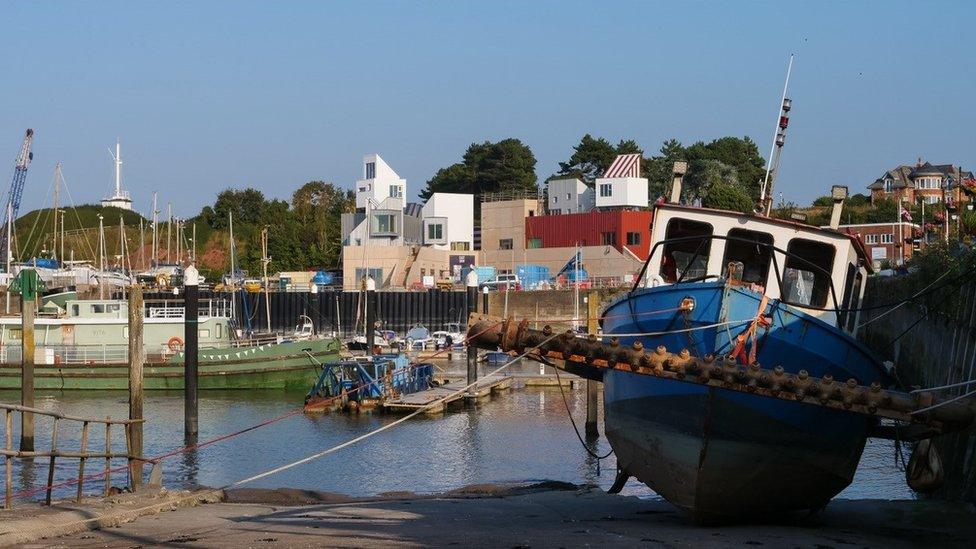Sir Grayson Perry and Somerset quiltmaker exhibit in Watchet
- Published
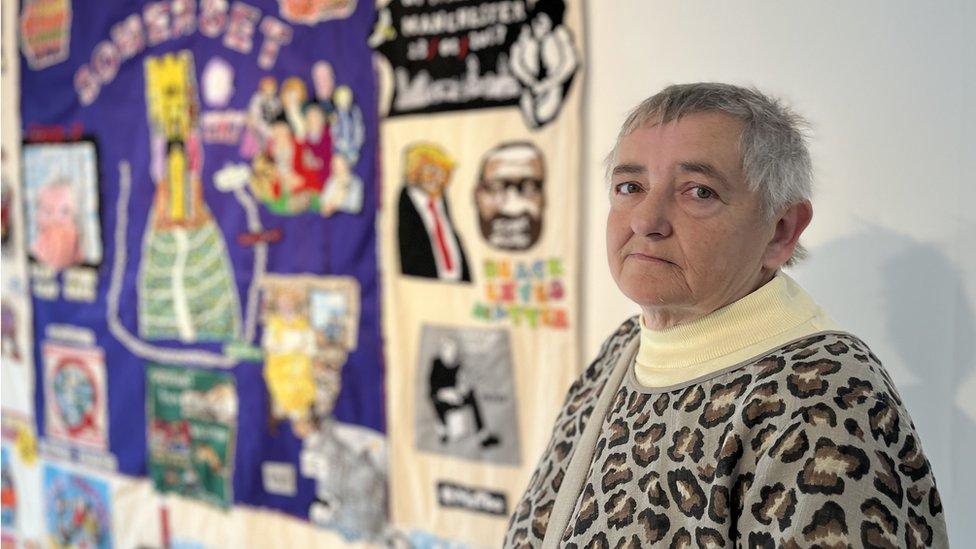
Lyn Barlow says it is a "real privilege" to have her work displayed with Sir Grayson's
An artist has said she "still can't believe" her tapestries have been exhibited alongside work by Sir Grayson Perry.
Three large textile hangings by Lyn Barlow have been displayed at East Quay arts venue in Watchet, Somerset.
The show, called Common Thread, external, also includes two tapestries by the internationally-renowned Sir Grayson.
The gallery's curator said Ms Barlow, 60, was "an extraordinary but relatively hidden talent".
![A close up of a colourful tapestry including the words Women [every[where] and Common People Pulp](https://ichef.bbci.co.uk/ace/standard/976/cpsprodpb/D9A6/production/_131381755_7test.jpg)
'A Reluctant Rebel: Part 2' depicts Lyn Barlow's life between 1983-2002
"They've taken inspiration from the Bayeux tapestry, Quaker tapestries, banners [like] Greenham banners, Banksy; they've got a bit of everything in them," said Ms Barlow.
She admitted finding it "a bit overwhelming" seeing her 1.8m (6 ft) wall hangings on display at East Quay gallery, partly due to the personal journey they convey.
"The middle of each quilt is the part where I try to tell my story and the outer part is what's going on in the world at large in that 20 year period: music, the arts and the environment I grew up in."
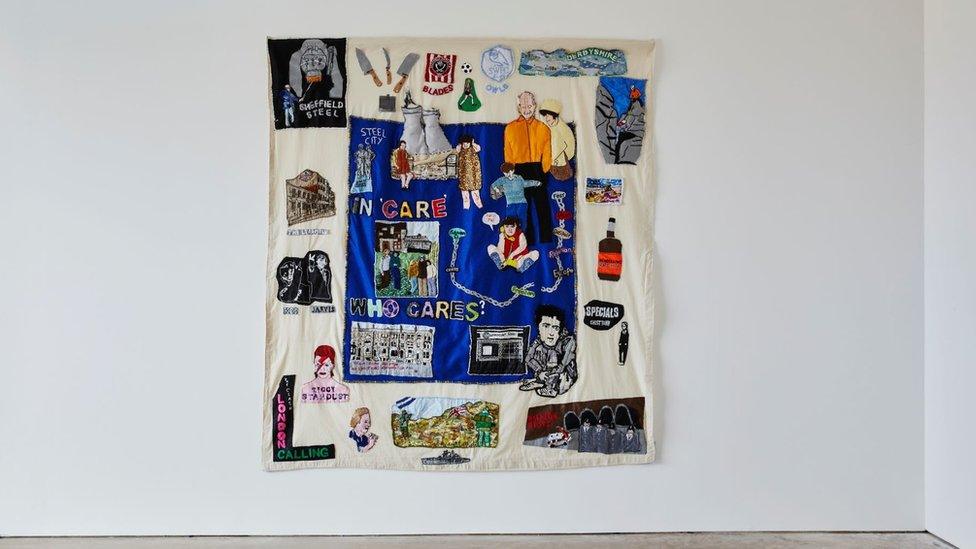
Imagery of Lyn Barlow's childhood in care is depicted alongside cultural references from the 1970s and 1980s
The first quilt included a child in a red dress saying "Help me!" into a bright yellow telephone.
Ms Barlow went into care in Sheffield at the age of 12.
"I'm trying to look back and convey it but not in a raw way," she said.
She regularly ran away and spent some time in London, where she stayed with a social worker on Villa Road, Brixton.
"It was a street of radical squatters, I didn't understand a lot of the politics but it gave me a sense of freedom and safety.
"The street had its own community, a newspaper called The Villain, a women's group, a food co-op, and taught me that the personal is political," said Ms Barlow.
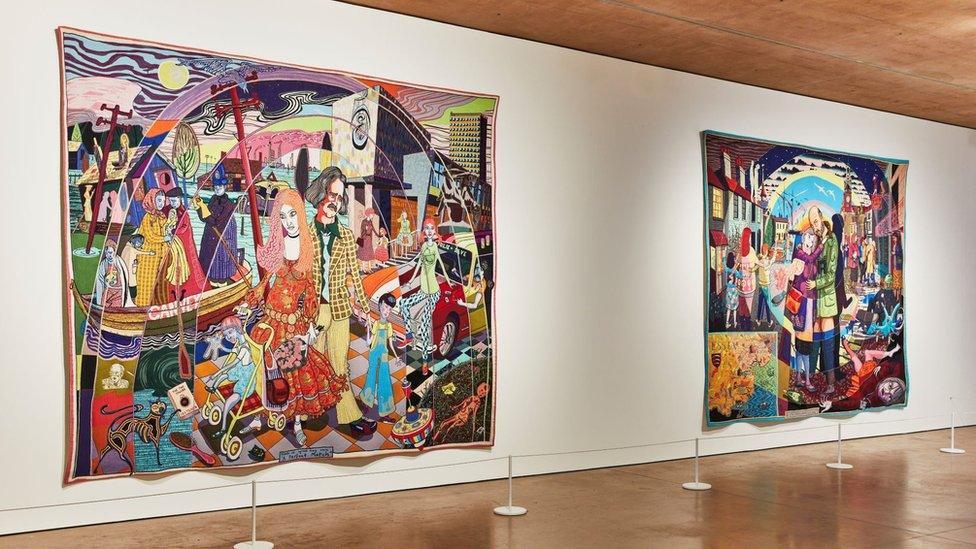
Sir Grayson's Essex House Tapestries tell the story of a fictional woman
Ms Barlow went on to spend nearly four years at RAF Greenham Common, a peace protest camp, including stints in prison due to the "non-violent direct action" she carried out there.
While at Greenham Common she worked with an investigative journalist who offered her a job on the New Statesman magazine.
After a few months there, she decided to go back to education, first to a college which specialised in teaching women who had not received a formal education in childhood.
She then gained a place to study at New Hall Women's College, Cambridge University.
But her mental health suffered and after experiencing a breakdown and a lengthy stay in hospital, she wanted to move somewhere new.
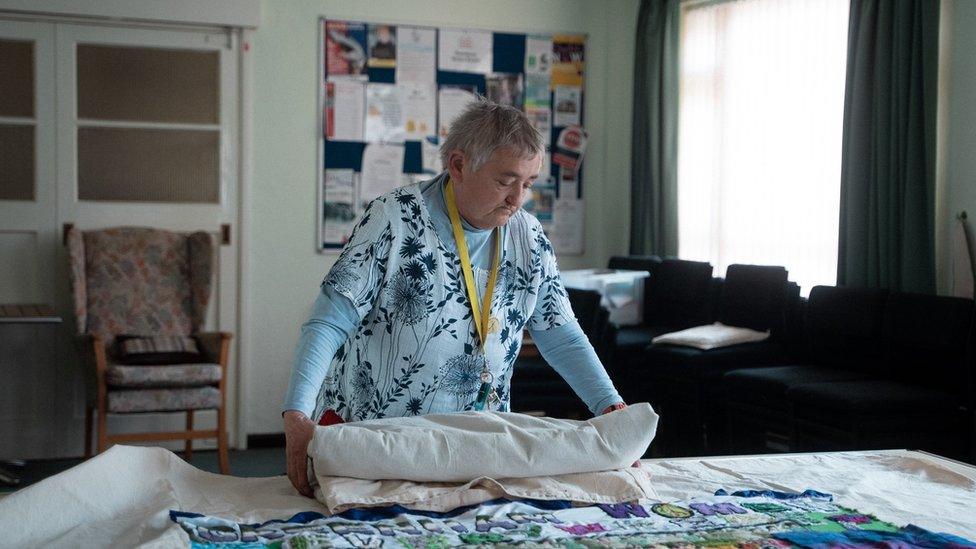
The tapestries were so large Ms Barlow only assembled them just before the exhibition, using a local community hall for space
"I made the leap and moved to Somerset in 1999. I'd never been to Somerset before," she said.
Settling in the west of the county, near the coast, Ms Barlow "discovered a love for textiles" having never sewed before.
She began to run two local craft groups in Williton and Watchet and called herself a 'craftivist' - using art for a political purpose.
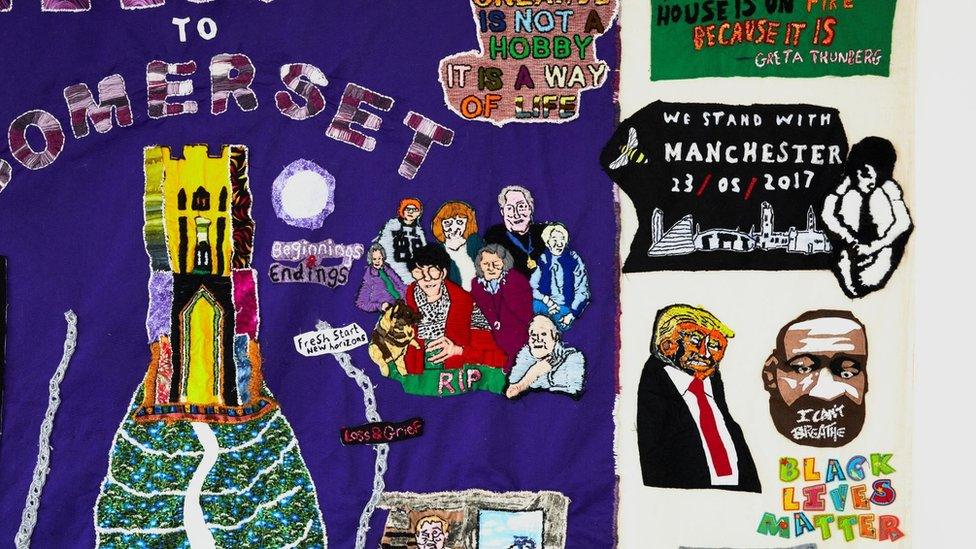
Lyn Barlow had never tried sewing before moving to Somerset in 1999
She cited Sir Grayson Perry and Banksy among her influences.
"I've realised I don't want my work to preach; I want it to rather engage and maybe to challenge."
'Common Thread' is at East Quay Watchet until 1 January 2024.

Follow BBC West on Facebook, external, X, external and Instagram, external. Send your story ideas to: bristol@bbc.co.uk
Related topics
- Published20 July 2023
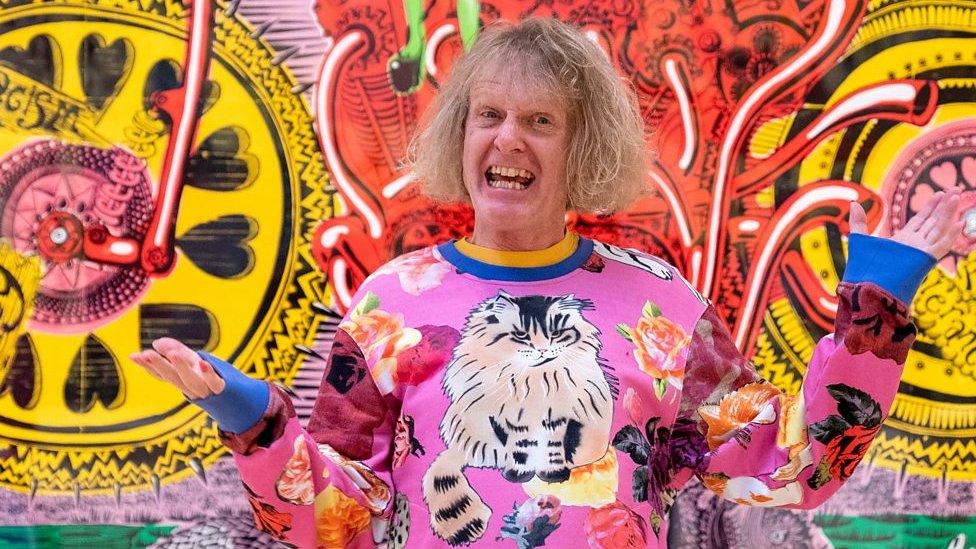
- Published28 June 2023
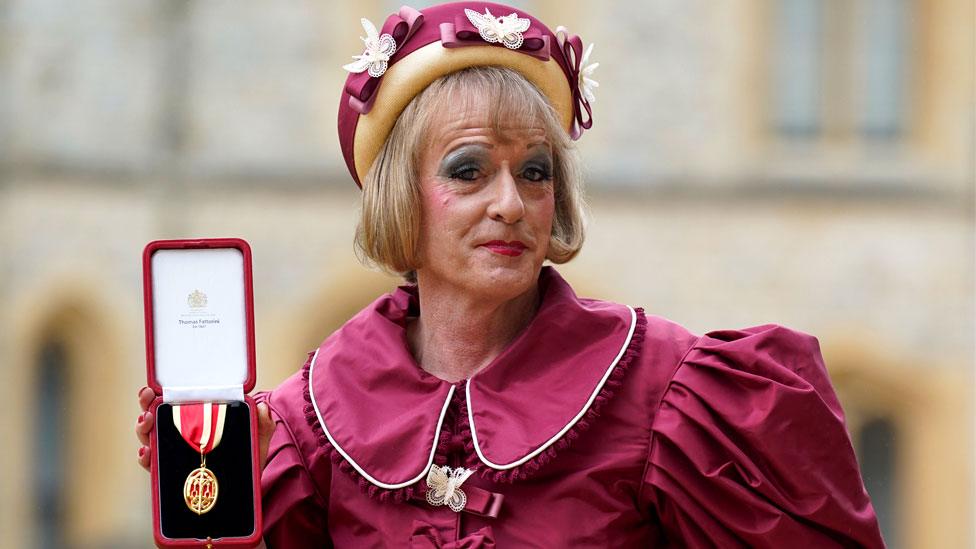
- Published20 September 2021
